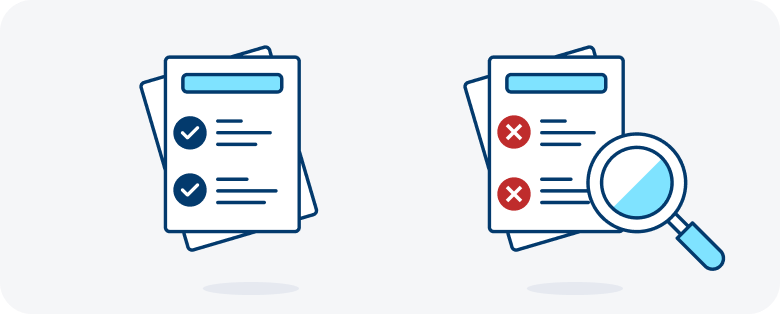9 min read
How to Get Property Management Clients (Lead Gen Methods)
With such a competitive and fast-paced real estate market, especially rental markets, knowing how to get property management clients is crucial for starting and...

Renting a Section 8 home can be a tricky situation to navigate. Also known as the Housing Choice Voucher Program, Section 8 is a federal initiative to help low-income families, older adults, and people with disabilities rent homes. There are rules for tenants and landlords to be aware of, and deciding to enter the program could be a complicated proposition.
In this Section 8 rental guide, we’ll dive deep into the ins and outs of this federal assistance program so you can decide if it’s right for you.
The Section 8 program was created by Congress in 1974 and is run by the U.S. Department of Housing and Urban Development (HUD). The goal is to make housing more affordable for individuals and families via federal subsidies.
Section 8 eligibility is determined by the total annual income and family size of U.S. citizens and some immigrants based on their status. There are two types of Section 8 housing programs: “project-based” programs, where eligible properties are linked to specific apartment complexes, and voucher programs, where tenants can choose a unit in the private sector and a public housing agency (PHA) pays Section 8 funds directly to the landlord.
Local PHAs — either by state, county, or city — have some flexibility in implementing a Section 8 program, but generally, if an applicant makes less than the median income for the area, they can qualify for the subsidy. The tenant must pay a percentage of their median income as rent, while the Section 8 funds cover the rest.
There are three categories that the program considers:
Median income can vary significantly by location, so check with your local PHA to identify the income level that they recognize.
For landlords, offering Section 8 housing is not required. Landlords can opt into the program for a number of reasons. However, there are some states and counties in which you cannot refuse to accept a Housing Choice Voucher.
In the next section, we’ll review the Section 8 application process for landlords.
Interested landlords can visit their local PHA to gather the necessary paperwork and understand the guidelines specific to the community. Generally speaking, Section 8 landlords will need to do the following:
You can view a complete list of these requirements on the HUD website, but a few areas of focus are:
If your property passes the inspection and the application is approved, landlords can start accepting tenants who qualify for Section 8 assistance.

For tenants, there are a lot of advantages to Section 8 housing if you qualify. Section 8 benefits provide access to affordable and safe housing for lower-income individuals and families, which would otherwise be unavailable. Renting a Section 8 home allows families to live in safe and desirable neighborhoods that might otherwise be unaffordable.
However, in many areas, the waitlist for Section 8 vouchers can be quite long — as long as 2-3 years in some places due to high demand.
For landlords, becoming a part of the Section 8 housing program can provide a steady and reliable source of qualified applicants vetted by their respective PHA. Not only is the pool of applicants readily available, but tenants often stay for longer periods of time when they’ve found stable and reliable housing.
Additionally, the chances of late or unpaid rent are significantly reduced as the government covers a portion of the rent payment. On the other hand, the inspection process can be burdensome in some cases since it’s significantly more strict than the landlord-tenant laws typically dictate, and correcting issues flagged by a government inspection can be lengthy and expensive.
Also, it’s typical for your first rent payment from the government to be late as you enter the system — but once you’re established in the system, the money you’re owed will come through, and future payments should arrive on time.
All Section 8 homes must pass a rigorous inspection to qualify for the program. The U.S. Department of Housing and Urban Development has set a baseline for the Housing Quality Standards (HQS) to ensure all properties are safe, sanitary, and decent.
There are 13 key aspects of housing quality covered by the HQS:
After the initial inspection, annual inspections are also required to ensure that landlords and tenants maintain the property in accordance with HQS regulations. Special inspections may also be scheduled if there are complaints from tenants or landlords about the condition of a Section 8 property.
Please visit the HUD website for more information and specific details on the HQS and inspections.

There are a number of aspects that the public, landlords, and tenants often misunderstand about what Section 8 is and how it works. In this section, we’ll debunk some of the most common misconceptions about renting a Section 8 home.
Participants in the Section 8 program lease private units, and tenants receive government assistance to pay rent costs. However, the units are privately owned and not owned and operated by the government, unlike public housing.
Tenants who apply for Section 8 housing must be employed and pay a percentage of the rent, depending on income level. The government voucher will cover the remaining 30-80% of the rent, depending on how much the tenant makes.
Due to increasing housing costs and stagnant wages in many areas of the country, waiting lists for Section 8 can be incredibly long and slow-moving. Contact your local PHA to check on the waitlist status and for guidance on navigating the process as smoothly as possible.
For landlords renting their units to Section 8 tenants, TurboTenant is an incredibly powerful tool. TurboTenant is an advanced property management software that can help landlords and tenants stay connected through an easy-to-use platform, complete with messaging capabilities.
While PHA’s handle income verification for Section 8 tenants, TurboTenant features comprehensive tenant screening services to help ensure landlords rent to the most qualified tenants. Once your tenants are moved in, TurboTenant’s maintenance tracking features simplify renter requests, empowering you to tackle everything from routine work to critical repairs. This makes passing the program’s annual inspections a breeze.
Finally, TurboTenant’s financial management and reporting tools uncomplicate tracking payments from your tenants and the government so that you can understand how your investments are performing at a glance.
There are so many ways that TurboTenant can help landlords and tenants for all Section 8 and non-Section 8 rental situations, so sign up for a free account today!
9 min read
With such a competitive and fast-paced real estate market, especially rental markets, knowing how to get property management clients is crucial for starting and...
8 min read
Condo property management, on its face, is exactly what it sounds like — overseeing one or many units in a condominium building...
7 min read
Finding the ideal commercial or residential rental property can be challenging for renters, as it may only meet some of their specific...